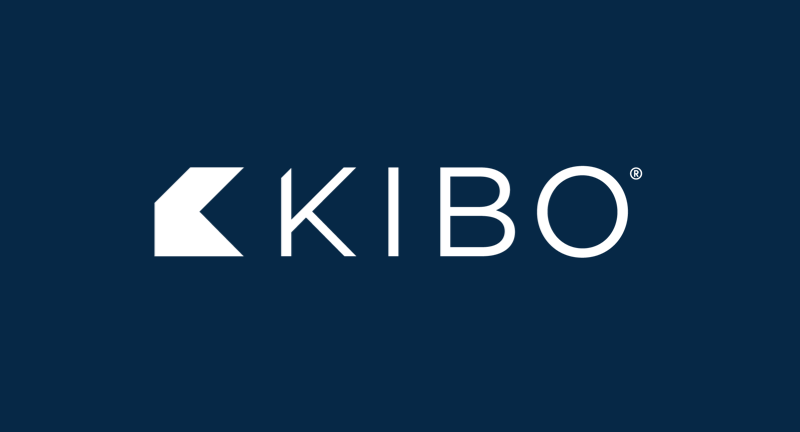
Tracking G2’s Impact on Your GTM
Attend Office Hours.

Is it possible to leverage your competitors' data to effectively scale your own outbound efforts? Ask Kibo, the company that used G2 Buyer Intent to do exactly that.
Kibo is a leader in comprehensive cloud-based software for retailers and manufacturers. The company provides unified commerce solutions for B2C and B2B e-commerce, order management, personalization, and point of sale. Kibo’s omnichannel platform is used by more than 800 customers who fulfill orders in 75 countries.
The company’s growth and success comes as no surprise. Kibo has mastered their inbound efforts, successfully facilitating requests from site visitors who are ready to learn more about the brand’s commerce offerings.
But their strong inbound strategy uncovered a weak spot: their outbound efforts.
Justin Berger, Senior Director of Demand Generation at Kibo, recalls: “As a marketing organization, we knew we couldn’t [succeed] through inbound alone. But outbound is challenging, it’s time-consuming.”
Kibo knew they needed to ditch traditional outbound cold-calling, which didn’t always guarantee a discussion with an in-market buyer. Instead, they decided to zero in on in-market accounts to mitigate unproductive meetings and time wasted on prospects who weren’t looking to buy.
And the first step to achieving this was to build a solid team of sales development representatives (SDR) and arm them with the powerful data they need to book more purposeful, productive meetings with high-intent buyers.
Prior to G2, Kibo heavily relied on an internal site tool that pulls user demographics. This scoring system helps Kibo understand which accounts make sense to pursue based on broad data points, such as the number of site visits or user location.
But this mechanism only uncovers baseline demographics about the site user, which doesn’t necessarily mean they are an in-market buyer.
“We ultimately wanted [our outbound efforts] to be as predictable as possible,” Berger explains. “Our goal was to be able to identify new and existing high-intent accounts and optimize our paid spend and SDR resources against it.”
Kibo wanted to improve outreach efforts and:
But identifying high-intent accounts was easier said than done. Kibo hadn’t dedicated much effort to gathering reviews on their G2 product profile, meaning they ranked low on search results and didn’t have much intent traffic flowing to their page.
Kibo knew they would struggle to improve their outbound efforts by relying on their G2 product profile intent data alone. However, they needed the granularity of G2 Buyer Intent to provide their SDRs with as much context as possible for each account to help them book more effective meetings.
So they did the next best thing: Rather than relying on their own traffic, they capitalized on their competitors’.
The idea was that SDRs can utilize intent data to naturally lead them to conversations about the buyer’s particular needs. If an account was identified looking at a Kibo competitor, the SDR could use that information to discuss key features that differentiate Kibo from the competitor’s solution.
“We were putting in too much effort to not convert [accounts] downstream,” Berger says. “We wanted to produce the most pipeline we could, so the primary thing I began measuring was efficiency: How can we most efficiently use our finite resources to create the most pipeline possible?”
So what makes accounts convert downstream? Two things:
G2 Buyer Intent data only surfaces accounts conducting relevant research on G2.com, the world’s largest software marketplace. If an account is doing research on G2.com, it is much more likely they are actively in the buying cycle instead of just willing to take a meeting. Those intent signals can be used to tailor each conversation and pitch information the account is actually looking to find.
By leveraging G2 Buyer Intent, Kibo immediately started converting more downstream accounts and booking more qualified calls and meetings with not just some accounts, but the right ones.
Once Kibo discovered that buyer intent was the key to concentrating outbound efforts, they had to figure out the best way to operationalize and scale it across their revenue teams.
Kibo operationalized and scaled outbound efforts in 3 steps:
The first step to moving these accounts downstream is training SDRs to lead more effective meetings. And at Kibo, the SDRs only focus on accounts that show intent, specifically through G2 data.
“Our SDRs live on the marketing team, which I think is beneficial,” Berger says. “It’s not a cross-functional effort.” This helped Kibo remove the all-too-common handoff issue many companies face when implementing a comprehensive account-based marketing (ABM) strategy.
Instead, Kibo took this unique approach:
Kibo leverages G2 Buyer Intent to drive these conversations, noting the following signals as being the most beneficial to their strategy:
Julia Lynch, Mid-Market Relationship Manager at G2, describes the unique way in which Kibo utilizes intent data, “In some ways, Kibo put the cart before the horse by focusing on intent data before gathering reviews. Most scale their presence with us first through the collection of customer stories before diving headfirst into intent data.”
“Kibo, however, knew they didn’t want to wait on that approach, so they leveraged competitive intent signals immediately and have created impressive results,” Lynch explains. “They’ve proven that the shadow funnel is a real thing, by pulling competitors' prospects into their own funnel using intent. And they’re getting into the conversation by leveraging the G2 platform, even without hundreds of reviews.”
Julia Lynch
Mid-Market Relationship Manager at G2
Lynch notes that most G2 customers follow a specific formula: they start by collecting user-generated content from their customers as a way to rank higher on G2 category pages, which hold high positions on search engine results pages (SERP). Ranking on G2 category pages (and therefore Grid Reports) attracts prospects to click directly to a product page, ultimately fueling more personalized intent data via profile page visits.
“Competitor signals are usually a part of the puzzle for our customers but for Kibo, these signals have been the whole puzzle so far,” Lynch explains. “And what’s more, is that Kibo still has so much more opportunity to drive value from G2 by now capitalizing on reviews from their own customers. Kibo is a beacon for other potential customers of G2.com - reviews can heighten the results of buyer intent, but they aren’t a barrier to entry”
For Kibo, personalization is the key to moving purposeful accounts downstream, and their strategy is built around directly addressing the unique needs of each account. SDRs already know what the account is looking for from intent data, so it eliminates the need for discovery calls based on high-level product benefits and selling points.
“We can tell our SDRs, ‘Here are accounts we know have buying intent. Prioritize these accounts before you dial a random cold account,’” Berger explains. “[Accounts without intent] are more time-consuming and less scalable efforts.”
A key way Kibo has identified high-priority accounts is by tracking one of their main competitors on G2. “We have an optimized formula to see when someone compares us against our main competitor,” Berger says. “The personalization tactic is to hammer on what we already know about the account.”
“I personally like the Alternative signals because it gives us something really specific to talk about [on calls],” Berger notes. “Even [the Competitor signals] gives us a specific talking point, versus just personalizing the messaging for an entire [software category], which can be really broad.”
The idea is to continue segmenting these accounts into topical streams and pushing them downstream based on the information collected from G2 intent data.
Berger explains that context is crucial to having more effective calls, “We’re looking at the who and the what - who are these accounts and what do we need to say to them?”
But this isn’t the only way Kibo leverages G2 Buyer Intent. In fact, the company finds that G2 signals can be used in tandem with their existing demographics scoring method and Demandbase One, B2B GTM Suite. By layering the intent signals on top of these tools, Kibo can identify which accounts fit the right demographics and show buying intent.
"G2 intent data has allowed us to narrow our focus and be more intentional and strategic.”
Justin Berger
Sr. Director, Demand Generation at Kibo
“Essentially, we have a bunch of segments built which include our demographics scoring, G2 intent data, and Demandbase,” says Berger. “We then advertise to [those accounts] to create marketing qualified leads ourselves.”
Kibo creates various prospecting materials that address how their solution compares to different competitors. Based on the information collected from intent data, accounts are segmented into these cadences with tailored messaging that speaks to the specific concerns.
“We use a marketing qualified account (MQA) model. We identify accounts we think have high intent and prioritize them for [paid advertising]. We plug those accounts into Demandbase to spend dollars while our SDRs prospect them.”
Kibo also looks into previously closed-lost accounts and, using G2 intent data, identifies which ones have shown a renewed interest in the product, product category, or one of Kibo’s competitors.
Intent data is powerful, but it becomes even more powerful when strategically used with ABM platforms like Demandbase. Kibo does this right by incorporating their G2 intent data with Demandbase to personalize messaging and identify new and existing in-market contacts.
One of Kibo’s main goals is to drive more pipeline and increase conversions by moving accounts with high intent down the sales funnel. And with the help of G2 Buyer Intent, they were able to do it.
Between January 2021 and August 2021, Kibo converted 4.88% of its total accounts from all outbound sources. However, they found that high-intent accounts from G2 had a 14.29% conversion rate, meaning they are almost three times more likely to convert.
more likely to convert accounts identified as high-intent from G2.
“The number of outbound opportunities we created this quarter has converted at a higher rate than the ones we created in previous quarters,” Berger explains. “We suspect that this will continue to translate into a lot more accounts converted.”
Before investing in G2, Kibo only had two SDRs whose time was mostly spent following up on inbound leads. Berger recalls. “It was imbalanced. We knew we were going to hire [more SDRs] and that the focus would shift to outbound. So we needed a more concentrated effort to do so.”
G2 Buyer Intent plays a critical role in Kibo’s ongoing outbound efforts. “We’ve put a big initiative into scaling our outbound abilities,” Berger says. “We built up our SDR team to support that. We’re taking on bigger, larger goals on an ongoing basis.”
“The theory was we could be a lot more productive,” Berger says. “And we’ve proven that theory to be true. We are a lot more productive when our SDRs focus on high-intent accounts, specifically ones from G2.”
Looking to target the most relevant, in-market accounts? G2 now integrates with seven top ABM platforms, including Demandbase. Learn more about our ABM integrations.

Activate any of our seven ABM integrations and dish out relevant, timely ads to the accounts that matter most using G2 Buyer Intent.
Brittany K. King is a Content Marketing Manager at G2. She received her BA in English Language & Literature with a concentration in Writing from Pace University. Brittany’s expertise is in supporting G2 products and sellers, focusing specifically on Buyer Intent data and Review Generation. After 5pm, you can find Brittany listening to her extensive record collection, hanging with her dog and cats, or booking her next vacation.

Activate any of our seven ABM integrations and dish out relevant, timely ads to the accounts that matter most using G2 Buyer Intent.
